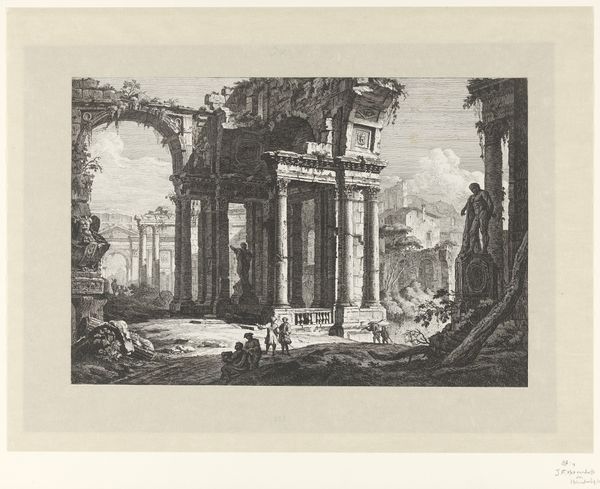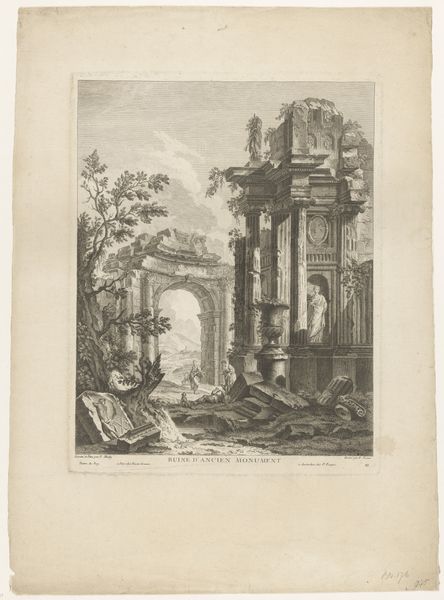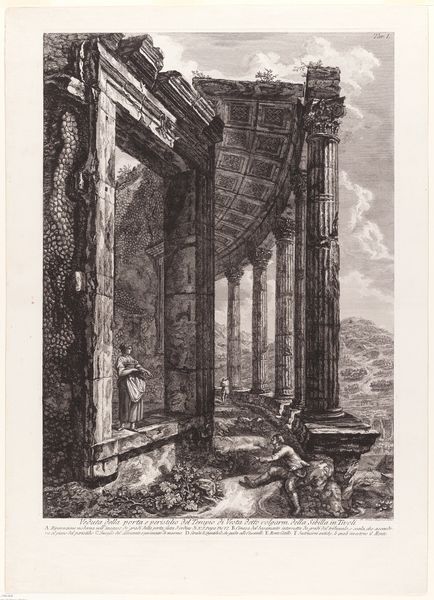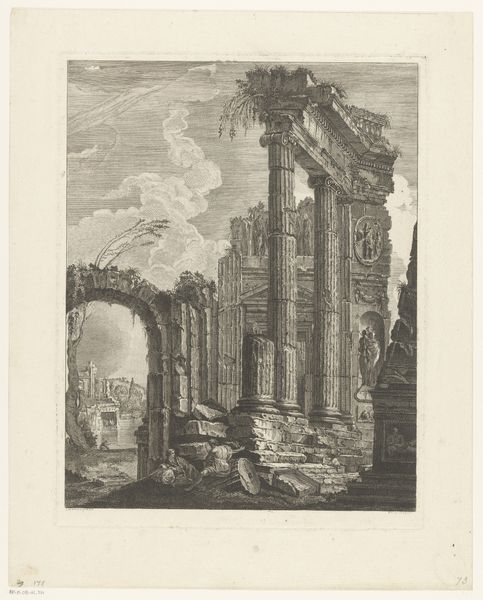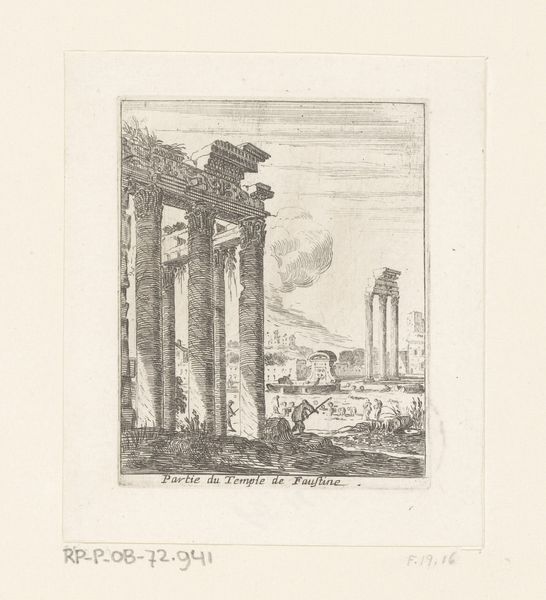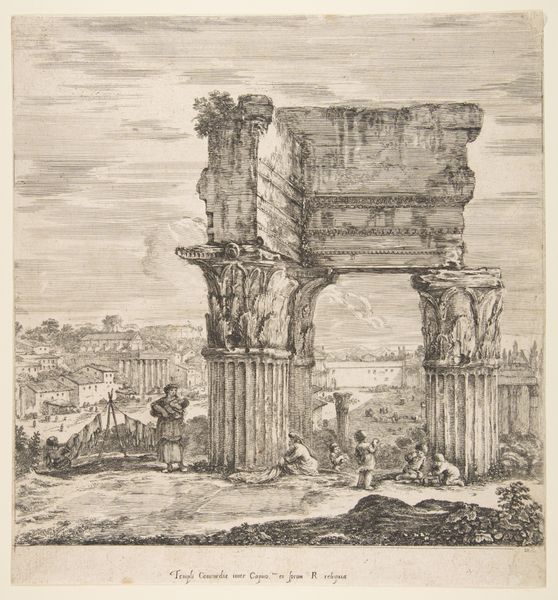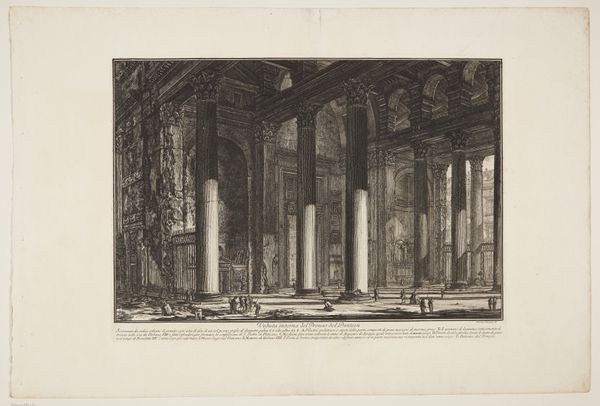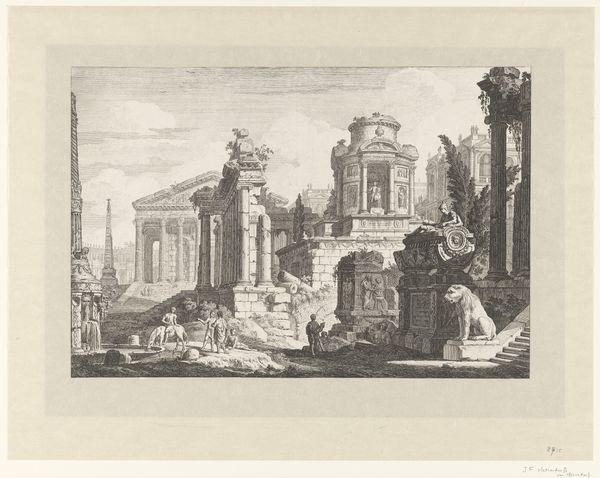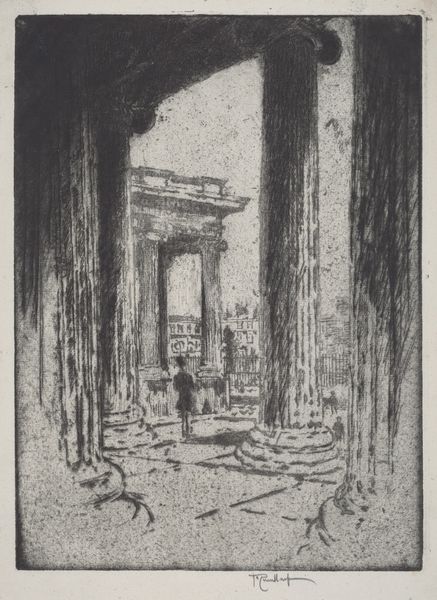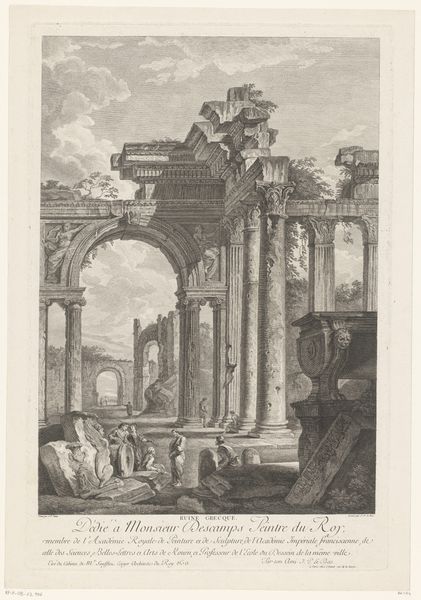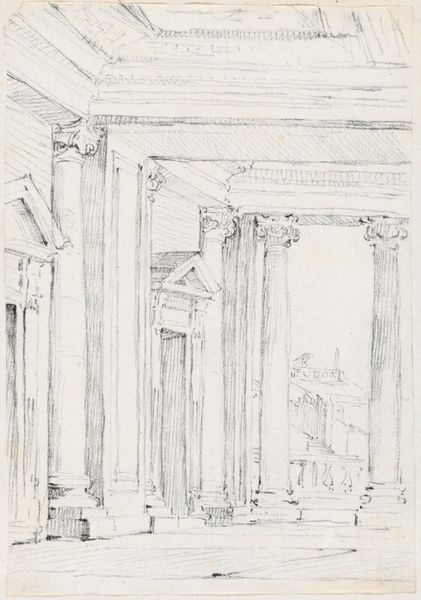
print, etching, architecture
# print
#
etching
#
greek-and-roman-art
#
landscape
#
etching
#
geometric
#
line
#
architecture
Dimensions: height 470 mm, width 290 mm
Copyright: Rijks Museum: Open Domain
Curator: Before us stands "Olympieion met twee mannen voor een zuil," or "Olympieion with two men in front of a column," an etching by Huib Luns, dating back to 1937 and housed right here at the Rijksmuseum. Editor: It has an imposing feel to it, almost overwhelming. The stark lines and heavy shadows convey such a sense of weighty history bearing down. Curator: Absolutely, and it's achieved through the meticulous process of etching, a printmaking technique relying heavily on the manual skill and labor involved in manipulating the metal plate to create such depth. The print, itself, could be interpreted as an easily mass-produced commodity that makes this ancient, once exclusive site more accessible to the everyday consumer. Editor: And who are these men? Do they represent a bygone era, rendered obsolete, dwarfed by the architectural remnants of empire? Are they merely tourists—contemporary viewers invited to consider the enduring power of antiquity, a power constructed upon generations of enslaved labor, gendered power structures, colonial domination? Curator: The material itself has undergone shifts and changes over its long life. Look closely: See how Luns deployed line etching to recreate a visual sensation with this composition! The architecture dominating everything underscores the production techniques themselves, from initial design through creation to, finally, being displayed to a potentially much larger audience. Editor: That linear approach is powerful! But those human figures! What does it mean to place figures alongside these massive structures? Perhaps a consideration of labor itself? They remind us that these stones weren't simply dreamt into existence, that behind every column lay not only artistic vision but tangible effort often extracted via inequitable social structures. I keep thinking about gender roles, as well—public/private dichotomies associated with this space. Curator: A lot to ponder. This seemingly simple print belies the great complexities around the work, both in production of such grand historical scale, as well as with that of its eventual printed depiction here! Editor: Exactly. For me, that pairing prompts questions about who has access to history, who shapes its narratives, and whose stories often get left untold when empires crumble. It really underscores that architecture isn't neutral; it's always telling a particular kind of story!
Comments
No comments
Be the first to comment and join the conversation on the ultimate creative platform.
